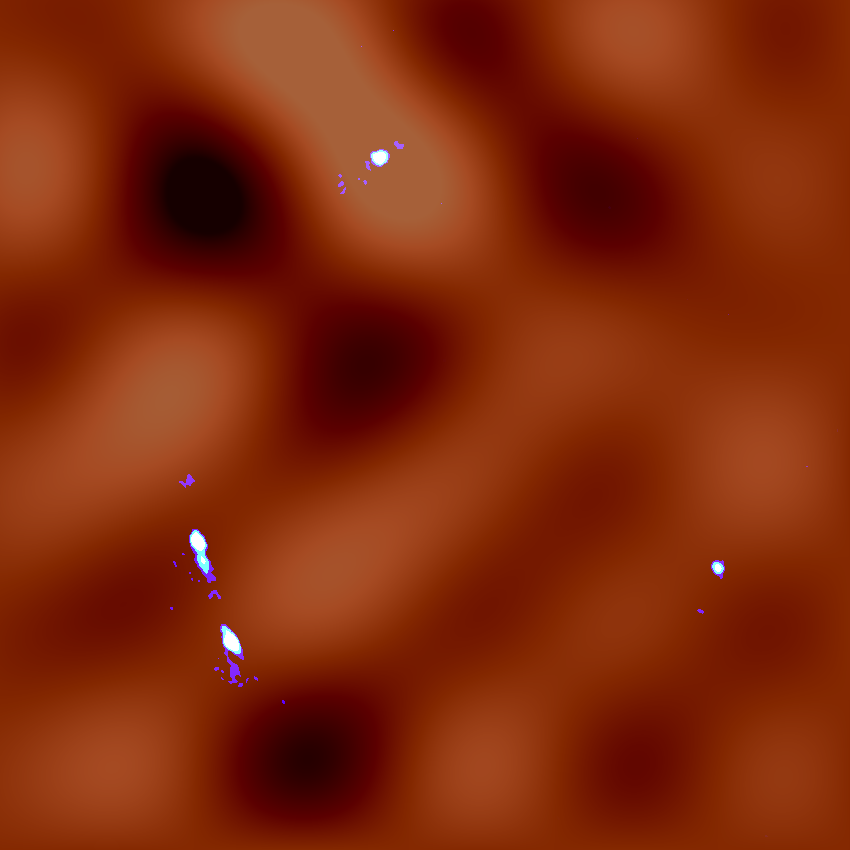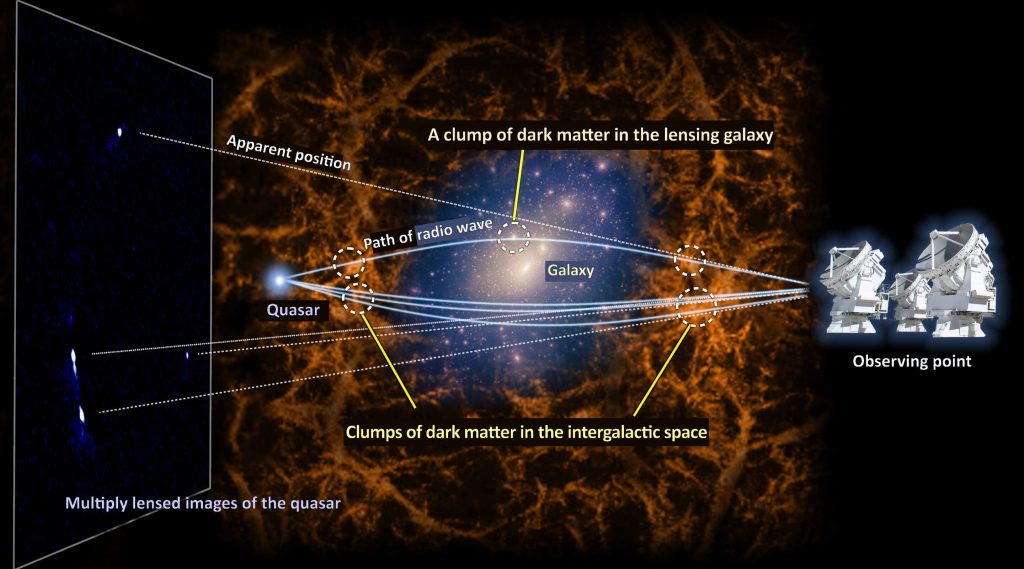A team of Japanese astronomers has made an unprecedented discovery. Using the ALMA radio telescope complex, they detected fluctuations in the distribution of dark matter in the Universe on scales smaller than the scale of large galaxies.

Dark matter is the material that makes up a significant part of the mass of the Universe. We can’t see it. Dark matter does not emit, absorb or reflect light. Its presence betrays only the gravitational effect on ordinary matter. In particular, it is precisely because of dark matter that the outer parts of spiral galaxies close to us rotate faster than they should, taking into account the observed mass of ordinary matter.
Since dark matter is not evenly distributed in space, but in clumps, its gravity can slightly change the trajectory of electromagnetic radiation (including radio waves) from distant light sources. This effect is known as gravitational lensing. Observations have shown that dark matter is associated with relatively massive galaxies and galaxy clusters. However, how it is distributed on a smaller scale is unknown.
Japanese astronomers used ALMA’s observational capabilities to study the distant quasar 3 MG J0414+0534 4, located at a distance of 11 billion light-years from Earth. Its image was “quadrupled” by a gravitational lens created by a closer foreground galaxy.

However, the position and shape of the images of the quasar did not coincide with calculations based solely on the gravitational attraction of the foreground galaxy, which indicated an additional source of gravitational influence. Further research revealed it: the influence of dark matter on scales smaller than those of large galaxies, namely, less than 30,000 light-years.
According to astronomers, the obtained results confirmed and enriched the available theoretical models of dark matter. According to them, its clumps are distributed not only within galaxies but also in intergalactic space. Thus, ALMA’s discovery was an important step towards testing theories about dark matter and further revealing its mysterious nature.
According to https://www.almaobservatory.org
Follow us on Twitter to get the most interesting space news in time
https://twitter.com/ust_magazine
